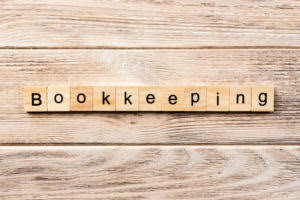
Break down your expense account into smaller sub-accounts. That way, you can observe which expenses you spend the most on, better track your money, and stay organized. Expenses are the costs that a business incurs during regular business operations. You incur expenses when your business spends money (e.g., when you purchase a good or service). Read on to first review what expenses are before diving into the world of expense accounts.

What Are Journal Entries for Expenses?
For instance, when you pay your employees, you debit the expense account to show the outflow of cash for wages. Credits boost your revenue accounts since they represent income your business has earned. For example, retained earnings when a customer makes a purchase, you credit your revenue account, which increases your total income. Understanding debits and credits is a critical part of every reliable accounting system. However, when learning how to post business transactions, it can be confusing to tell the difference between debit vs. credit accounting. You need to implement a reliable accounting system in order to produce accurate financial statements.
Cash
Expenses are accrued to have a better understanding of financials through a holistic view of what’s actually due. This practice differs from the other form of accounting, cash basis accounting. Cash basis only accounts for expenses that have been invoiced and paid for. This can potentially leave expenses unaccounted for if the bill has yet to arrive. You may have other expenses that require a separate expense account category, like business loan payments.

Liability Accounts
The articles and research support materials available on this site are educational and are not intended to be https://x.com/bookstimeinc investment or tax advice. All such information is provided solely for convenience purposes only and all users thereof should be guided accordingly. 11 Financial is a registered investment adviser located in Lufkin, Texas.
Are capitalized, so they fall under the capital account category. An expense is a loss and therefore results in a reduction in capital. Since a reduction in capital is recorded on the debit side of an account, all expenses are also recorded on the debit side of the relevant account.
Imagine that you want to buy an asset, such as a piece of office furniture. So, you take out a bank loan payable to the tune of $1,000 to buy the furniture. And good accounting software will highlight that problem by throwing up an error message. Some regions are facing stiffer increases than others, most notably taxpayers in the North Shore’s three municipalities. For those in the “North contra expense account Shore Sewerage Area” the property tax bill will rise from $813 this year to $1,147 in 2025 — a 41 per cent increase. Expenses are deducted from revenues to arrive at the company’s net income.

How do debits and credits affect different accounts?
- There’s a lot to get to grips with when it comes to debits and credits in accounting.
- Monitor your company’s credit score, and try to develop sufficient cash inflows to operate your business and avoid using credit.
- So you’d have to record the transaction as a $1,000 debit in your cash account and a $1,000 in your bank loan account.
- Temporary accounts (or nominal accounts) include all of the revenue accounts, expense accounts, the owner’s drawing account, and the income summary account.
- With just a few clicks, the software handles both sides of your transactions.
- This refers to cash received from customers for previous sales made on credit.
There’s a lot to get to grips with when it comes to debits and credits in accounting. Every transaction your business makes has to be recorded on your balance sheet. If you’ve paid for the expense, you’ll credit your cash account, and if you still owe the money, you’ll credit accounts payable or accrued expenses. You credit your cash account to record money leaving the business if you’ve paid for the expense.
- Whenever cash is received, the asset account Cash is debited and another account will need to be credited.
- Your goal with credits and debits is to keep your various accounts in balance.
- You’ll pay interest charges for both forms of credit, and borrowing money impacts your business credit history.
- In double-entry bookkeeping, the left and right sides (debits and credits) must always stay in balance.
- All changes to the business’s assets, liabilities, equity, revenues, and expenses are recorded in the general ledger as journal entries.

Let’s go into more detail about how debits and credits work. Review activity in the accounts that will be impacted by the transaction, and you’ll usually be able to determine which accounts should be debited and credited. Your decision to use a debit or credit entry depends on the account you are posting to, and whether the transaction increases or decreases the account. Sal purchases a $1,000 piece of equipment, paying half of the purchase price immediately and signing a promissory note for the remaining balance. Sal’s journal entry would debit the Fixed Asset account for $1,000, credit the Cash account for $500, and credit Notes Payable for $500.
Enrol and complete the course for a free statement of participation or digital badge if available. Let us look at some examples to understand the concept better. Business owners love Patriot’s award-winning payroll software.
